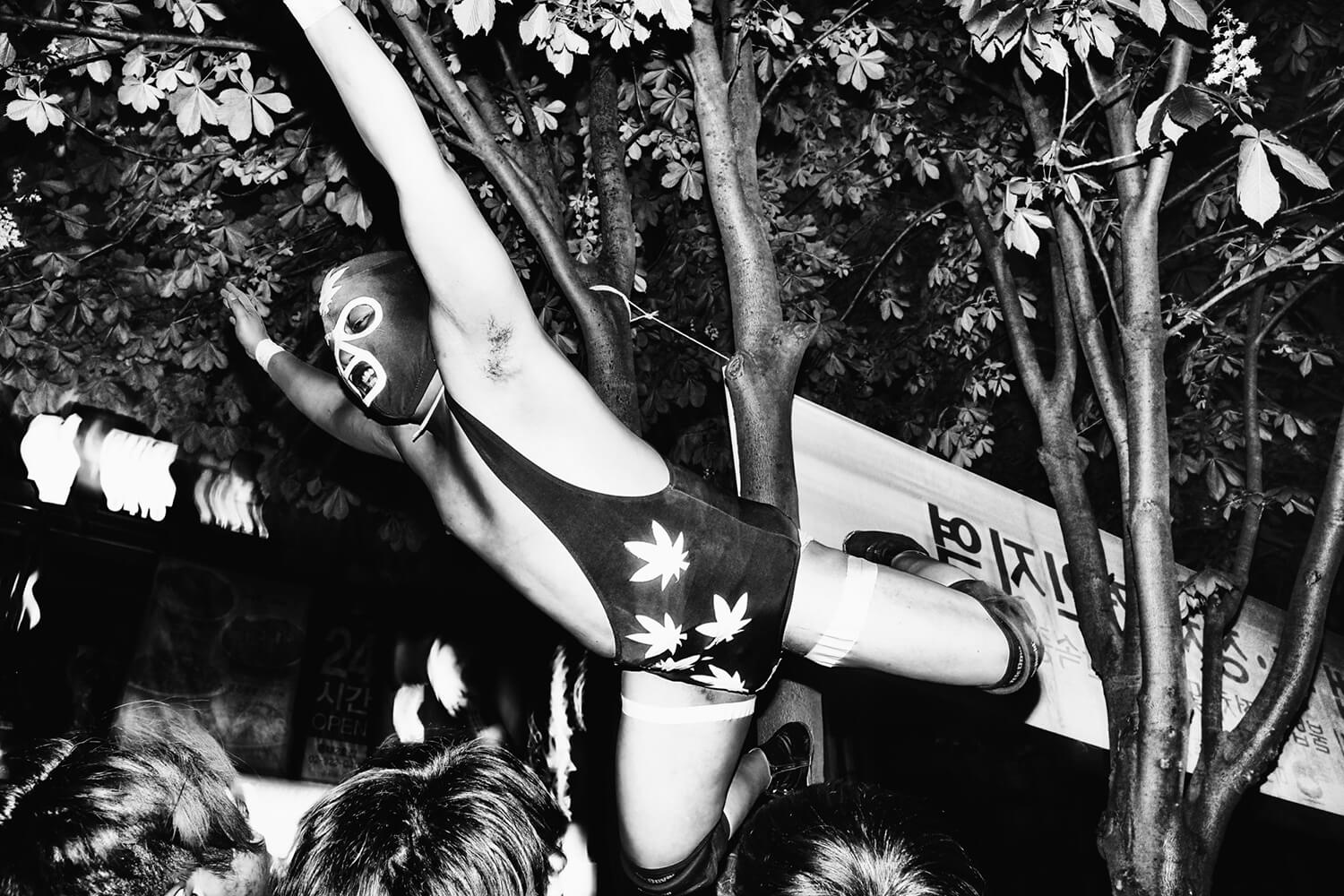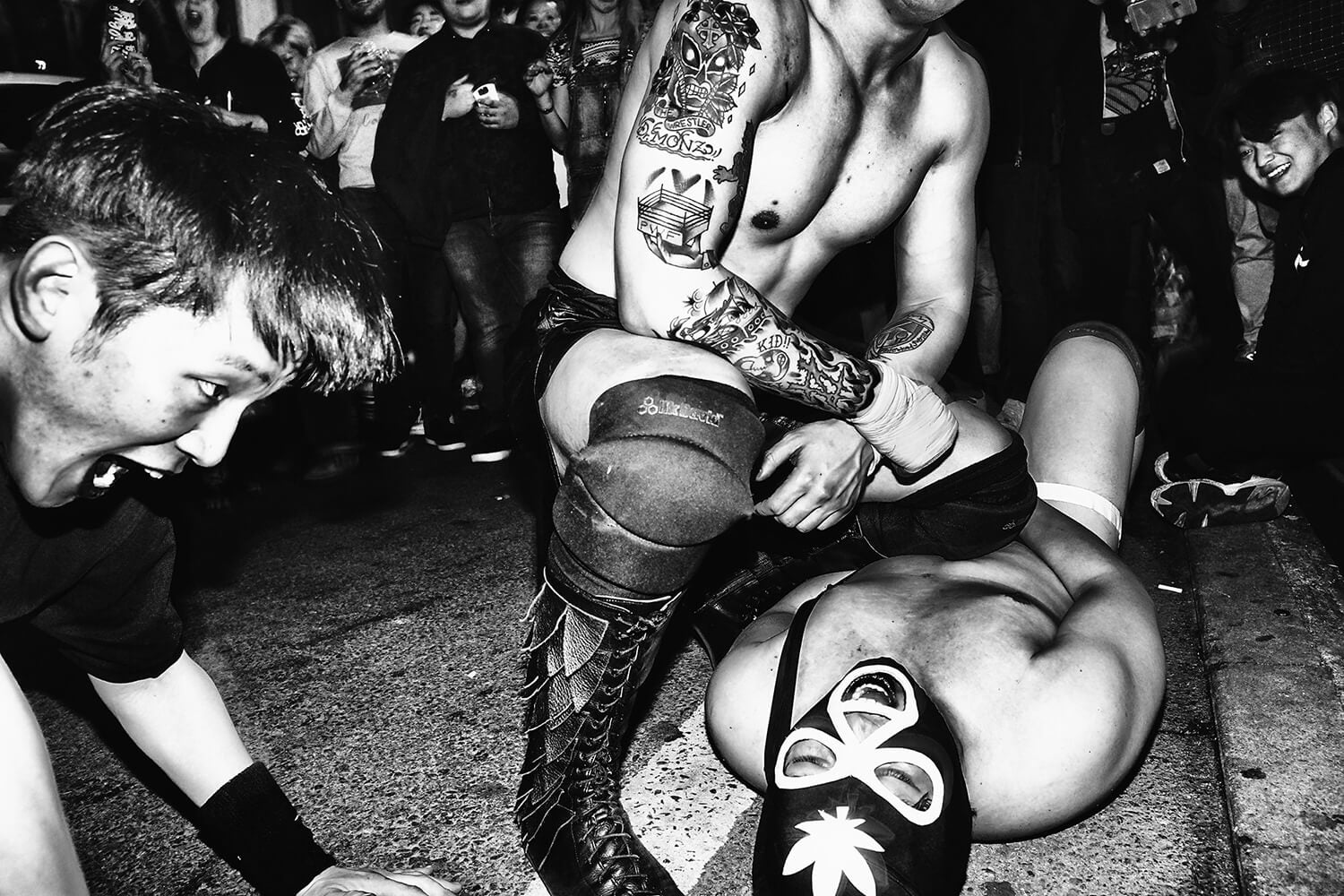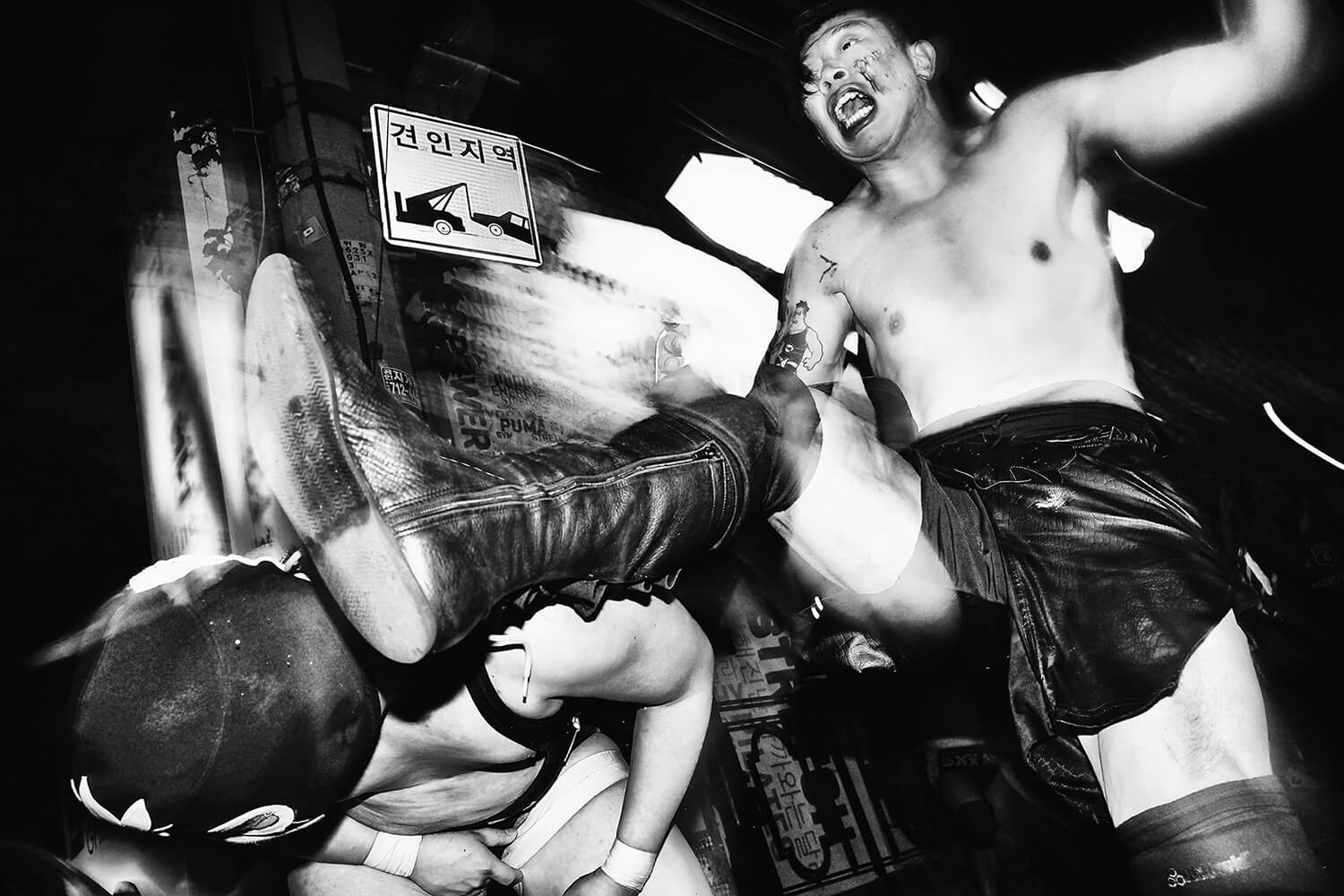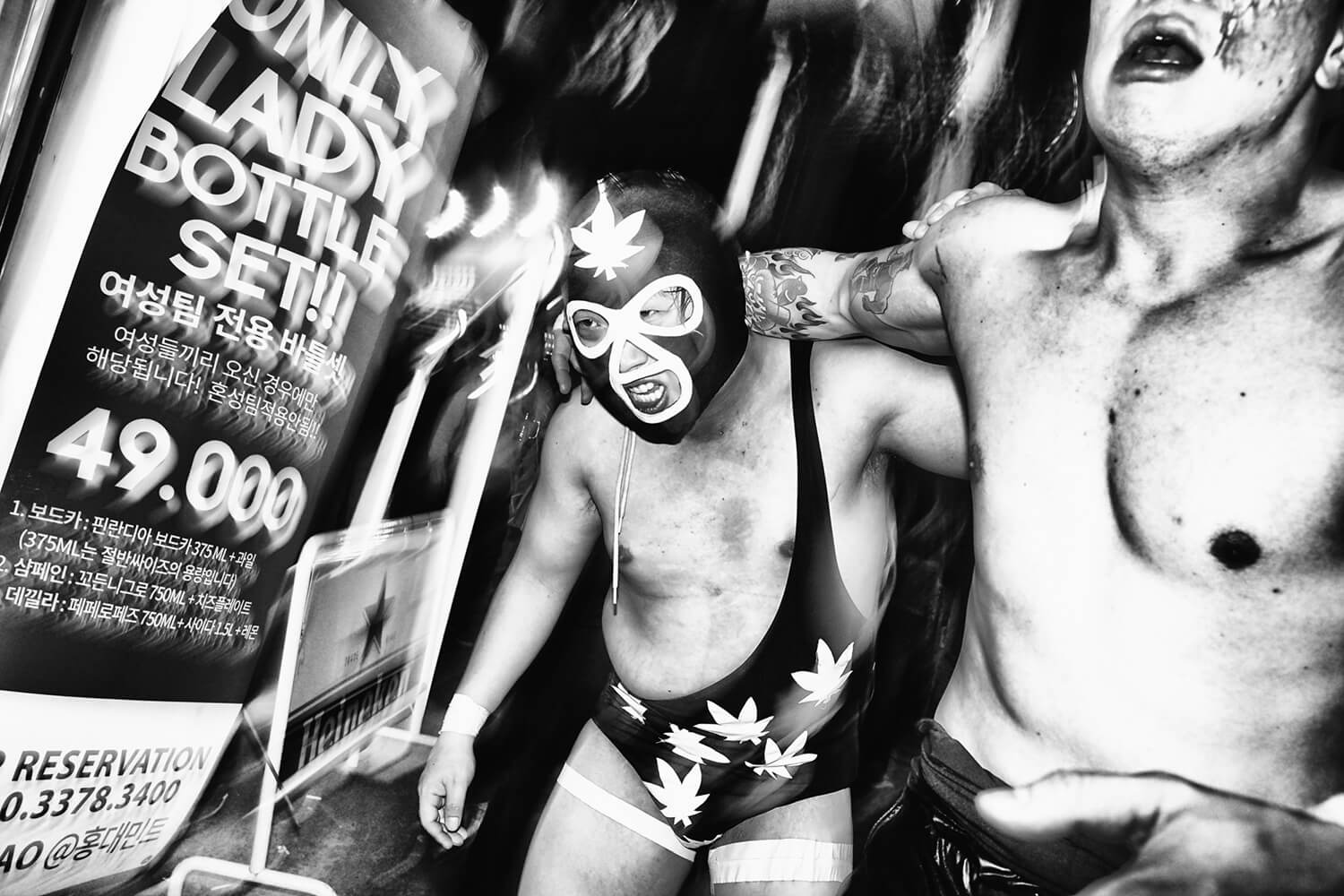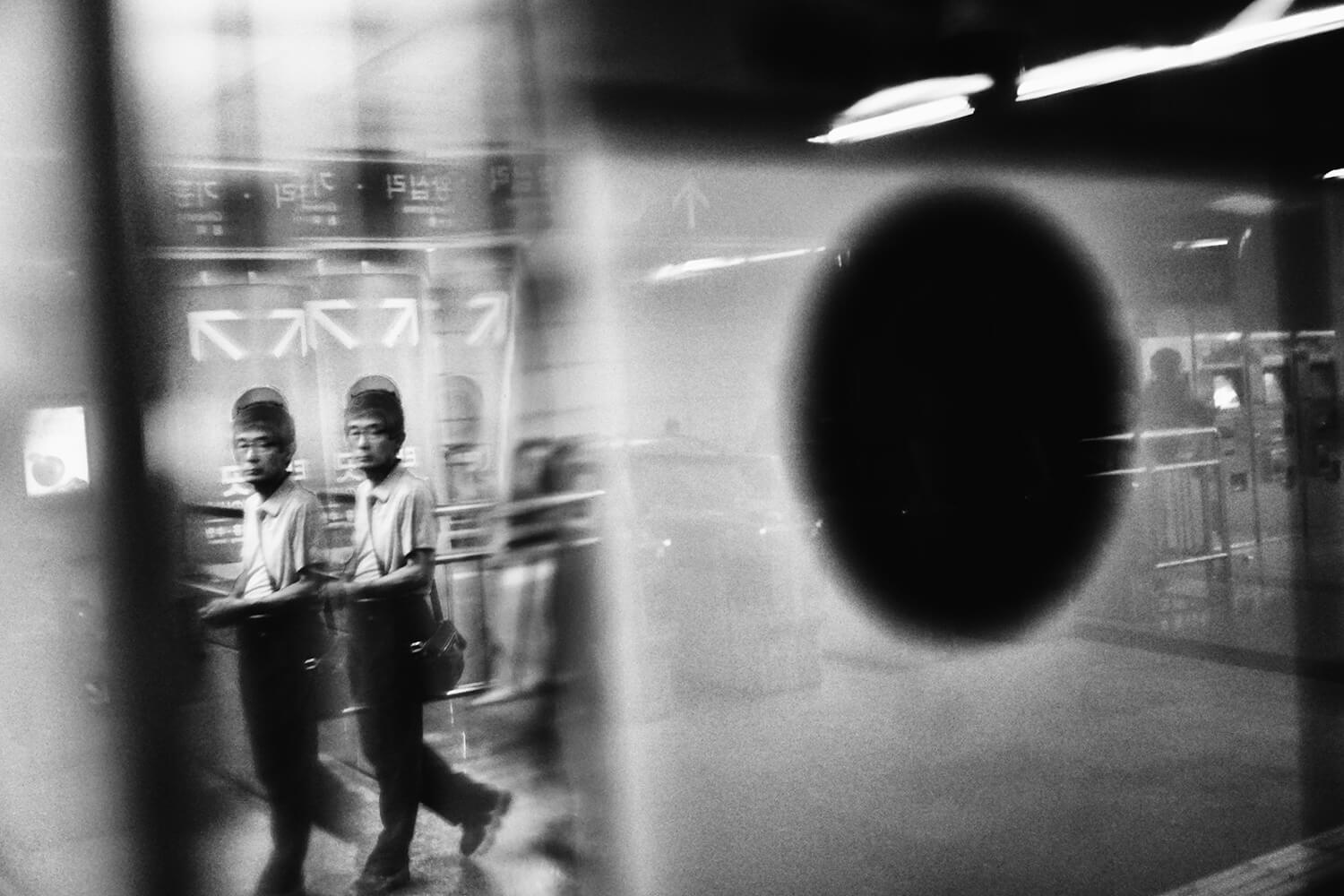INTERVIEW
Looking Out and In
WITH ARGUS PAUL ESTABROOK
An interview with Argus Paul Estabrook
“I began seeing myself as a “half-eye” and then started to think about what that might mean.”
Argus Paul Estabrook won our Street Life competition with a clever, claustrophobic image shot on the Seoul Metro, that judge Bruce Gilden described as like “an x-ray. I like photos where the viewer can make up their own story”.
A photographer who has featured in Life Framer before, and carved out his own distinct street style – intense, candid shots that often make use of hot white flash, fiery lens blur and reflections – Argus has turned his attention to subjects as diverse as the border towns of the North-South Korea DMZ, the hidden LGBTQ+ community of Seoul and its street wrestling sub-culture. And as the photography industry finally pushes to be more diverse and inclusive, he has recently joined both Native Agency and Diversify Photo.
Keen to know more, we put some questions to Argus…
Dear Argus. Firstly, congratulations on winning our Street competition. What did you make of Bruce Gilden and the Life Framer team’s comments?
Thank you so much. I was honored to have my work chosen by Bruce Gilden. He’s a legend in the field that so many of us have learned from. And to have him speak about my work was fantastic. For that particular image, I was playing with reflection and tried to take advantage of the resulting abstraction. I feel both Mr. Gilden and Life Framer’s comments validated what I was trying to achieve.
Can you tell us a little bit about the image, the circumstances behind it, and the story you wish to tell?
I had been running errands around Seoul and riding Line 2 on the metro. I was at the back of the train car when I noticed its metal door was highly reflective. I had my camera and started composing when an older man stepped into the perfect spot. It was like seeing a version of my future self through a portal in my chest. I shot a few frames, then in a short time, the scene was completely different. The future “me” I saw had disappeared, swallowed up by a crowd of fellow commuters.
You spend a lot of time shooting on the Seoul metro (another of your shots was in fact a winner of a previous Life Framer Street Life competition). Is there something about everyone being on a journey, and in your own words “all away from home” that chimes with you having moved between North America and Korea yourself, and feeling somewhat out of place in the latter, or is that too simplistic?
In the United States, I grew up in a rural area on a farm with no neighbors. I was isolated and had little contact with my Korean roots. So when I moved to Korea, the journey was to learn about myself and connect to the culture. Being a biracial photographer, I began seeing myself as a “half-eye” and then started to think about what that might mean. Philosophically, I sense my camera acts as an interface between my outward observations and inward thoughts, transforming the viewfinder into a window of reality that is both open and reflective. I feel that is what’s happening when I photograph—I’m looking out and in simultaneously. Is that trying to find a vision of myself or a notion of home? Maybe it’s both. I like being in a place where that question lives.
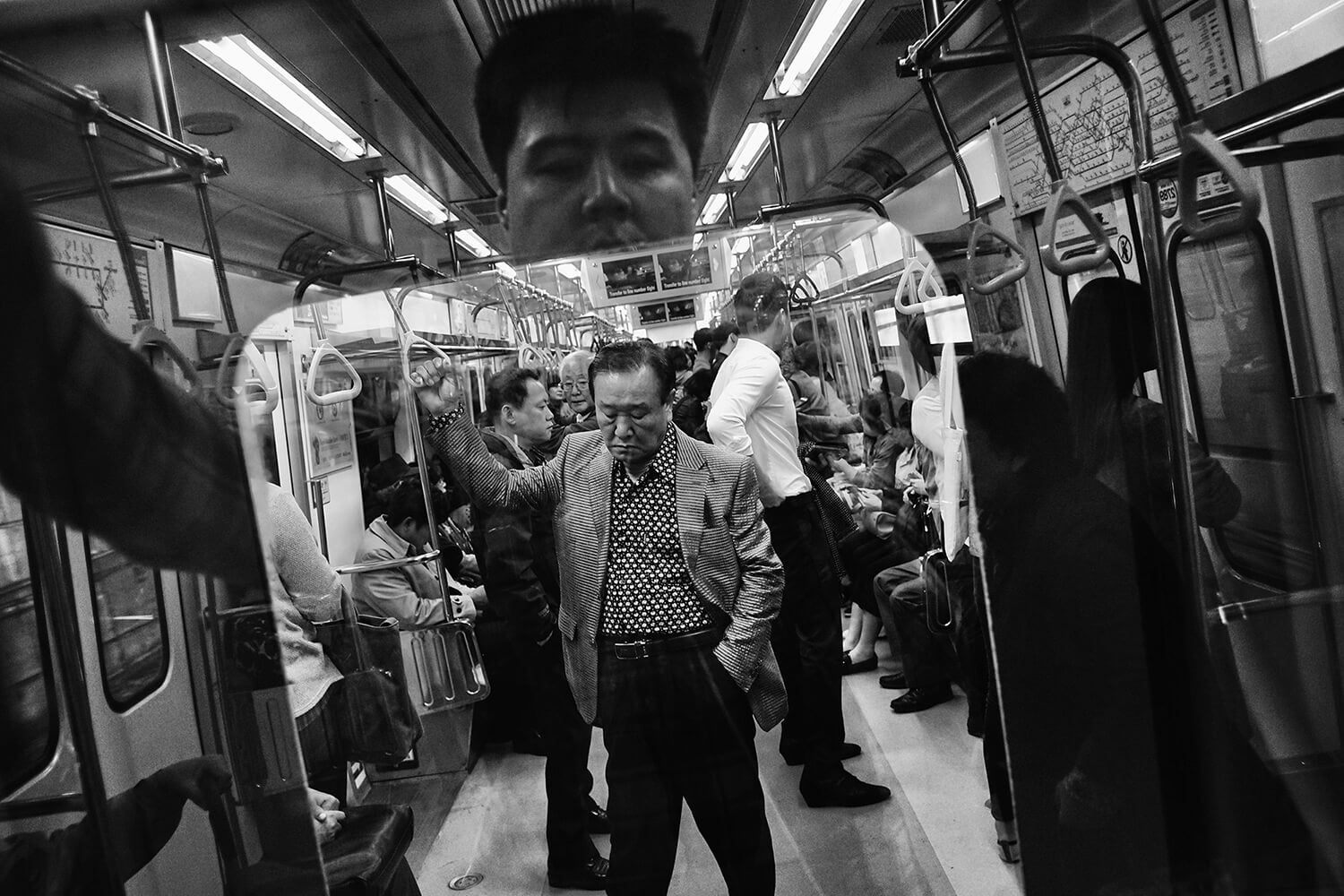
ARGUS’ WINNING STREET LIFE IMAGE
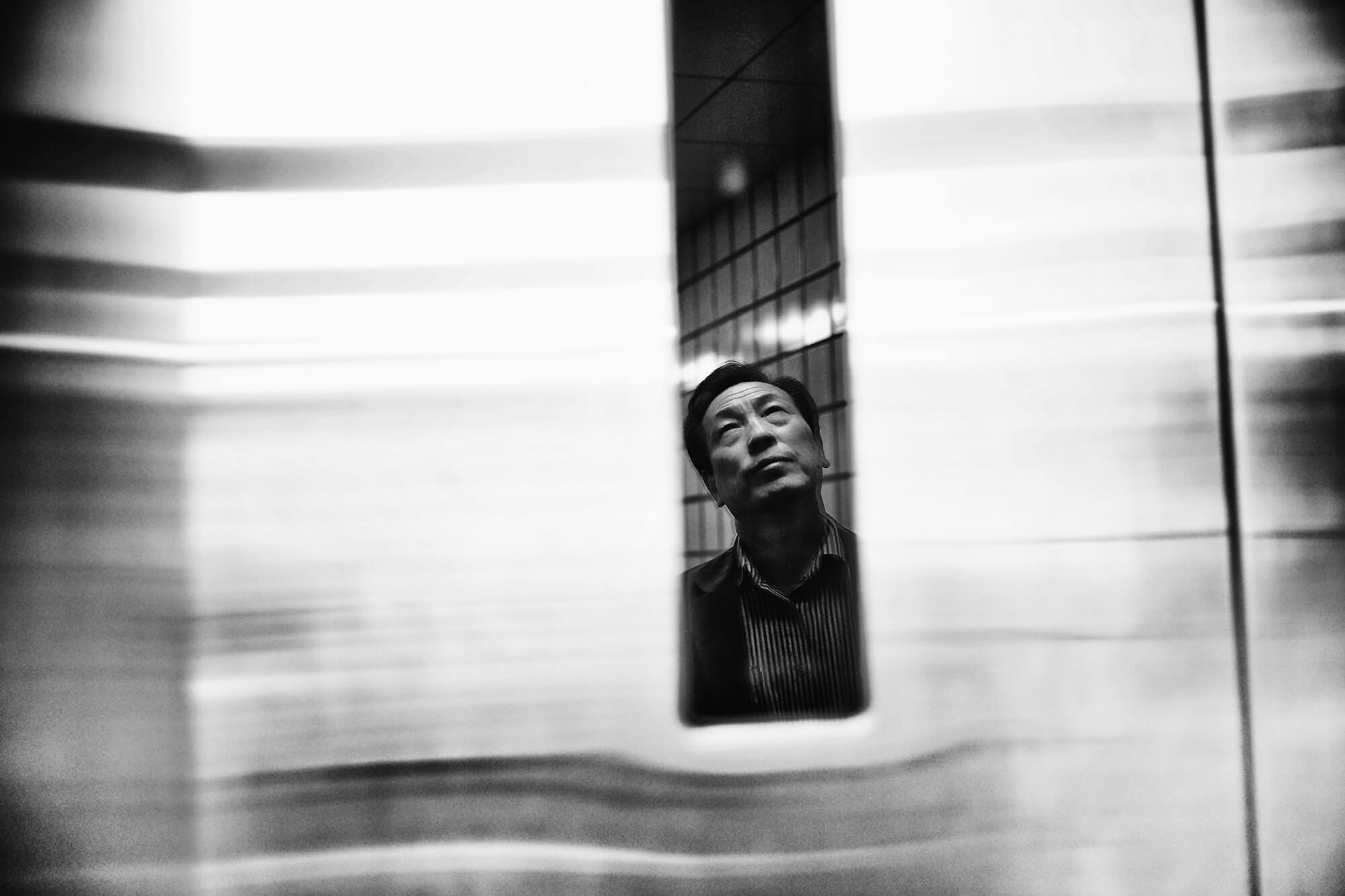
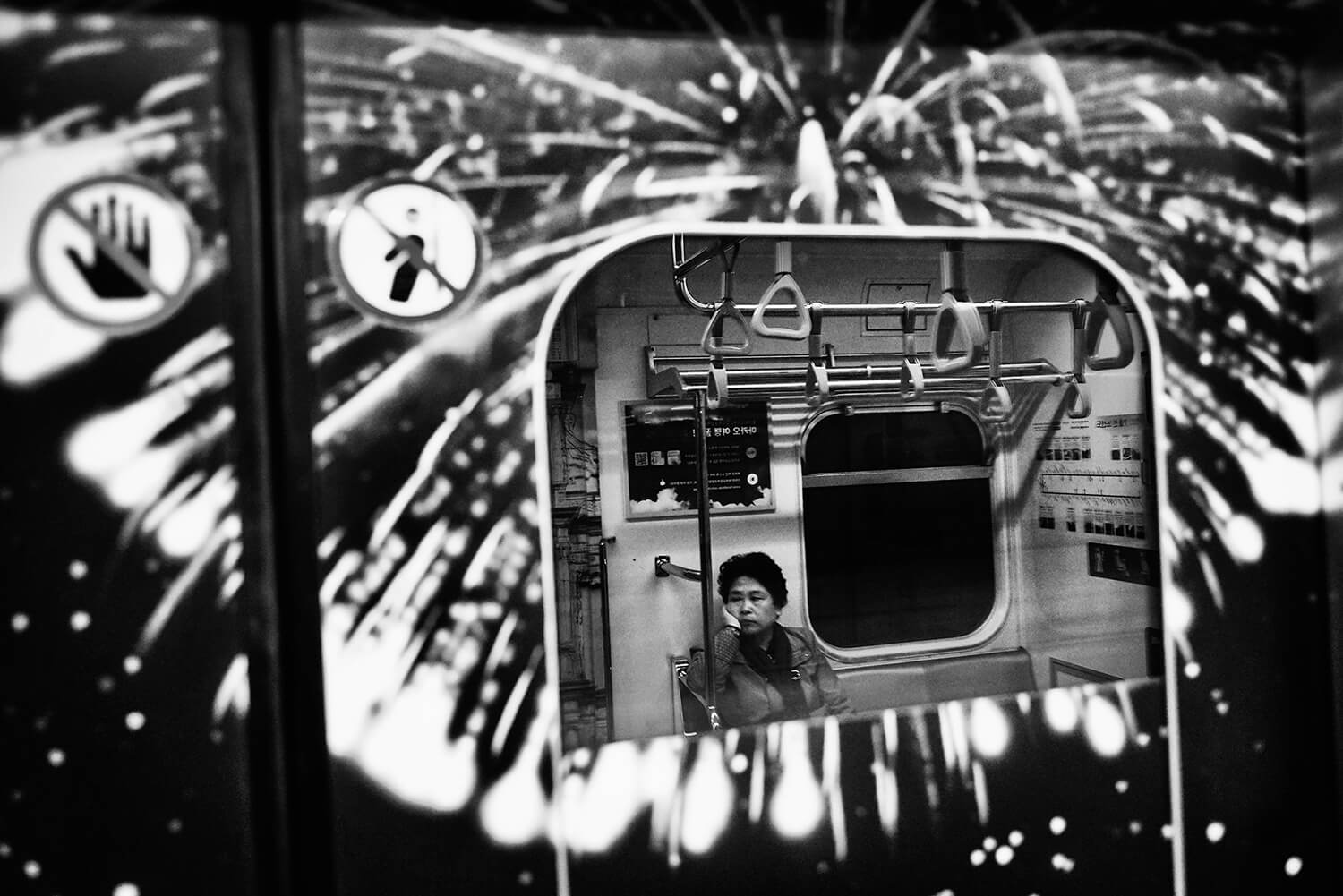
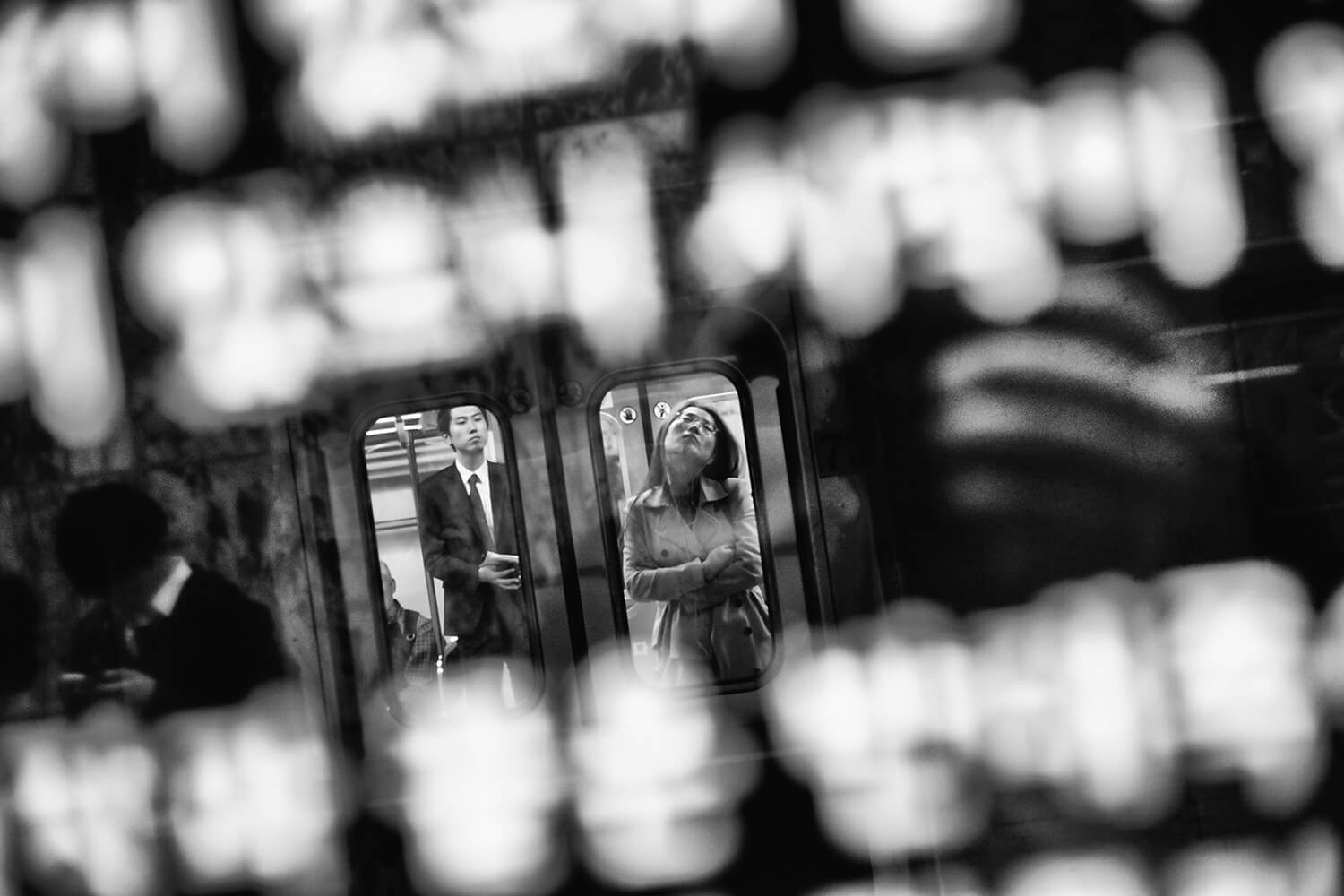
EXPRESS BUS TERMINAL STATION
And describe your working style. Do you have particular methods or rituals? Are you completely responsive to the moment, or do you set out with particular ideas in mind?
At times I have particular ideas in mind, but even if I do, I search for photographs holistically with an openness to wherever the day takes me. Also, I try to be mindful about always having a camera nearby. These days for me, that’s usually a Ricoh GR or Leica CL because they have such impressive image quality and are also so small that you can take them anywhere. Perfect. Another mindset I like to have when I photograph is to think of myself as a fisherman with a narrow net. Sometimes I’ll move quickly and even dance my way through an environment if I need to flow that way to get a capture but when I do shoot, I try not to think of myself as a person hunting for a decisive moment with a gun. I sense the moment as if time is a river, and I listen to it tell me when to cast my net. That’s when I feel the sparks.
Do you have another favorite shot you’ve taken down on the metro? Tell us about it.
I don’t know if I have a favorite. While some might be technically stronger, I see my photos as poetic phrases. They are all kind of equal in their own way. One image from this series though, that I think about from time to time is titled, “Express Bus Terminal Station” [ABOVE]. I sometimes exclude this photograph from submissions because the Metro series is 11 images long, and I usually have to edit submissions down to 10. By cutting it out, I find the flow of the series still functions. But the reason I like it is that the image was made by shooting through a tinted glass door that had a Korean poem written on it. I shot between the words and focused past the black mirror at a train about to depart. Through the windows of that train, I was able to capture two distinct images. In one window, there’s a woman in a coat bending her neck up as if she has had a long day and is tired. In the next window is a man who has just boarded the train. His attention is locked upon her. I like this image because all the abstractions, layers, and frames tucked away in the composition contribute to the story of hidden, isolated lives. I can relate to that.
And from a technical perspective, you often (in this series and others) shoot at night or in low light conditions, making use of lens blur and light trails as an aesthetic device. Is this a conscious thing?
I always try to take advantage of lighting conditions. It took a while, but I now feel I have a level of understanding of how available light and flash can affect the narration of the scene. With my protest photography, I like using drag shutter because it conveys the passion of the crowds. Other times I use motion blur to express anxiety or confusion. That said, I try not to use that tool for everything because the moment might not be calling for it. For example, in my latest work, there’s almost no motion blur and when the flash is employed, it is used to create direct shadows that “underline” what I thought was important in the scene.
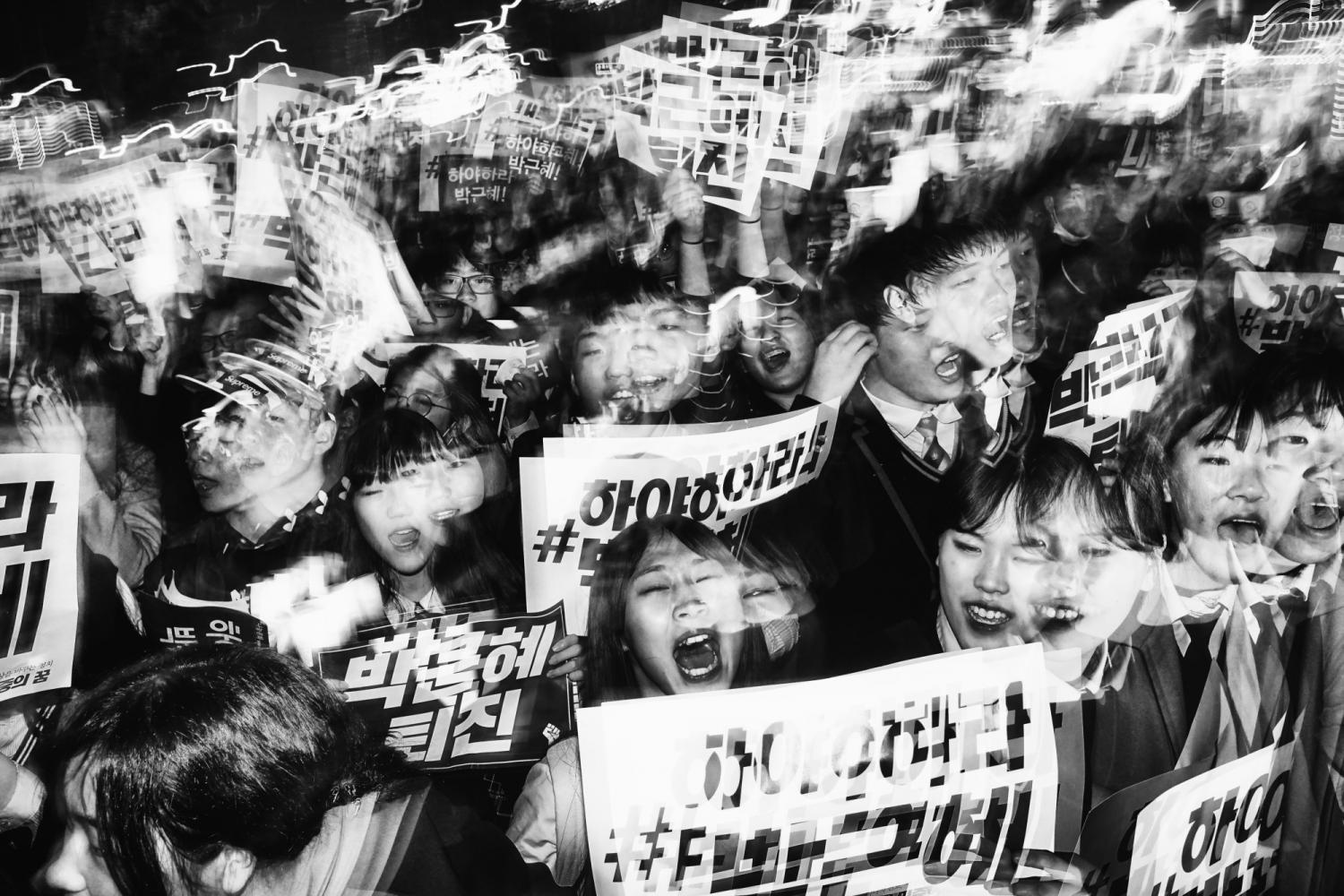
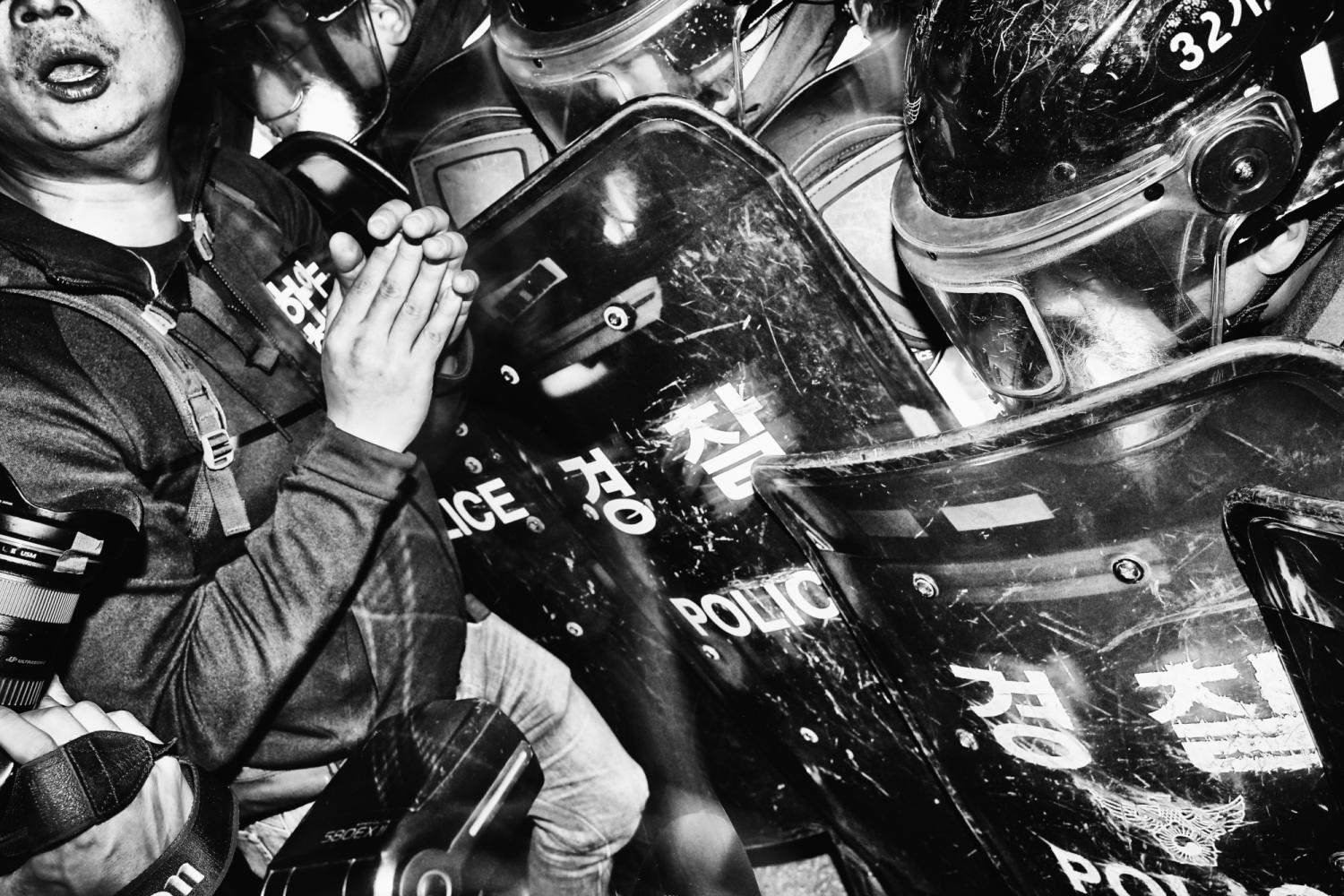
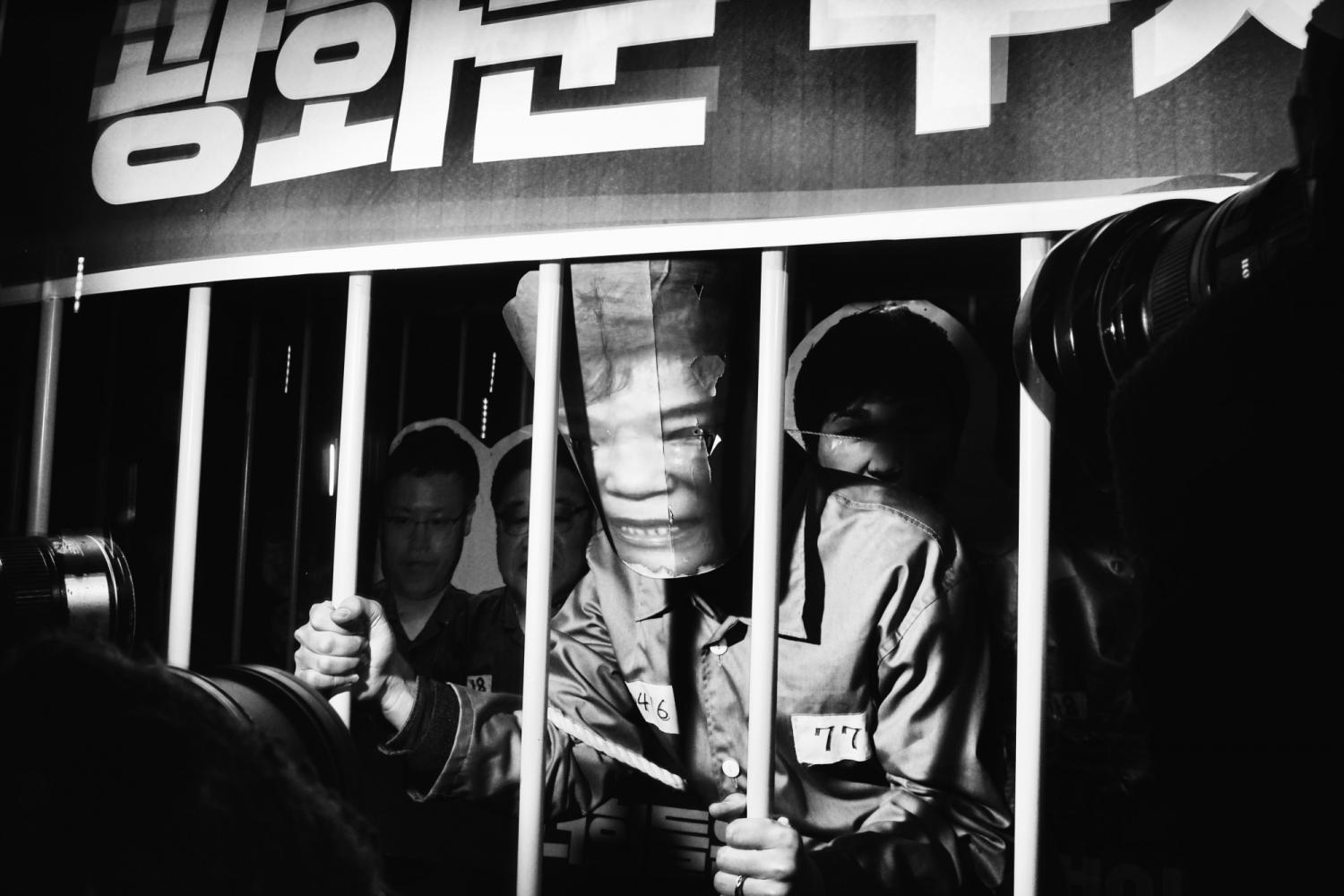
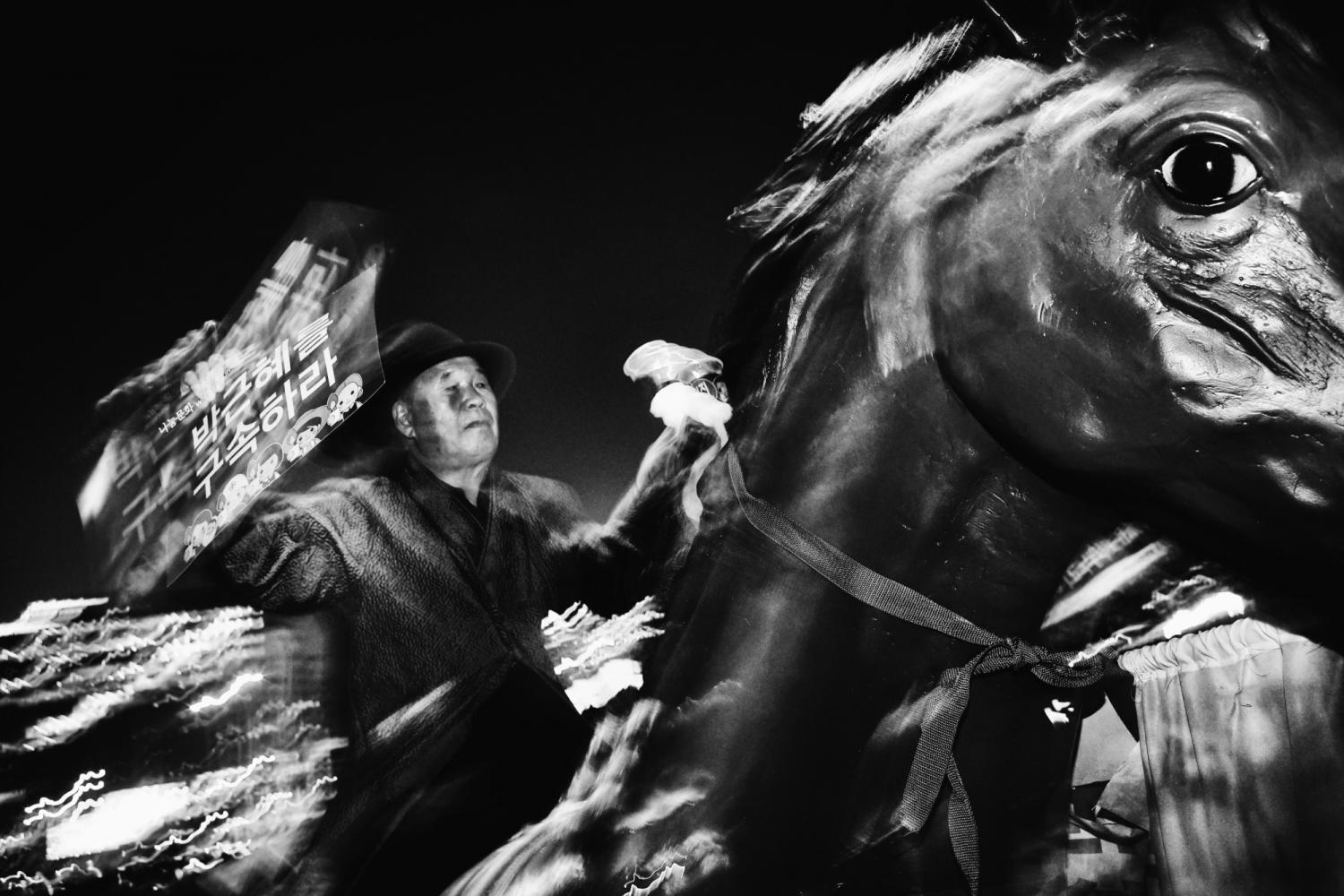
Aside from your work on the metro, you have a pretty varied set of project topics – the border towns of the North-South Korea DMZ, the hidden LGBTQ+ community of Seoul, anti-Trump rallies, wrestling subcultures… I can see a desire to bring awareness to social subjects and to give voice to marginalized communities. Is that a fair analysis? What draws you to certain subjects?
For me, I’m interested in different facets of Korean identity. I’m trying to learn about a Korea that I can’t find on television or in books. Sometimes I volunteer my services to different groups to help tell their story, and in doing so, I gain an education. I also am intrigued by how uniforms or particular sets of clothes affect self-expression, authenticity, and even authority. Mostly, I like seeing how other Koreans stay true to themselves. Other times, like with my border project, I am trying to disrupt stereotypical views that surround the southern areas of the DMZ. Furthermore, I believe that unification is inevitable and I’m hoping this body of work archives a way of life before that change occurs.
Having studied a BA Photography and an MFA Studio Art in Virginia, what were the most important things this formal education gave or taught you?
It gave me a solid foundation of history, particularly that of Photography and Art; a sense of what has come before and why is good to know. Another thing it afforded me was a studio to experiment in and try new ideas. But I also learned a lot informally by working on the farm with my father and having to problem solve there. Luckily, I’ve been able to fold what I learned from all those experiences into my street practice of using just a camera, one lens, and a flash. Because of past experimentations, alongside an active eye that seeks creative answers for challenges in front of it, I make the camera take the pictures I see and not the other way around.
And finally, what’s keeping you busy right now Argus What can we expect next?
My current focus is to continue my border project. I also have another conceptual street idea that I’m excited to explore. It’s a secret for now. Time will tell and what is there to know without the gift of time?
